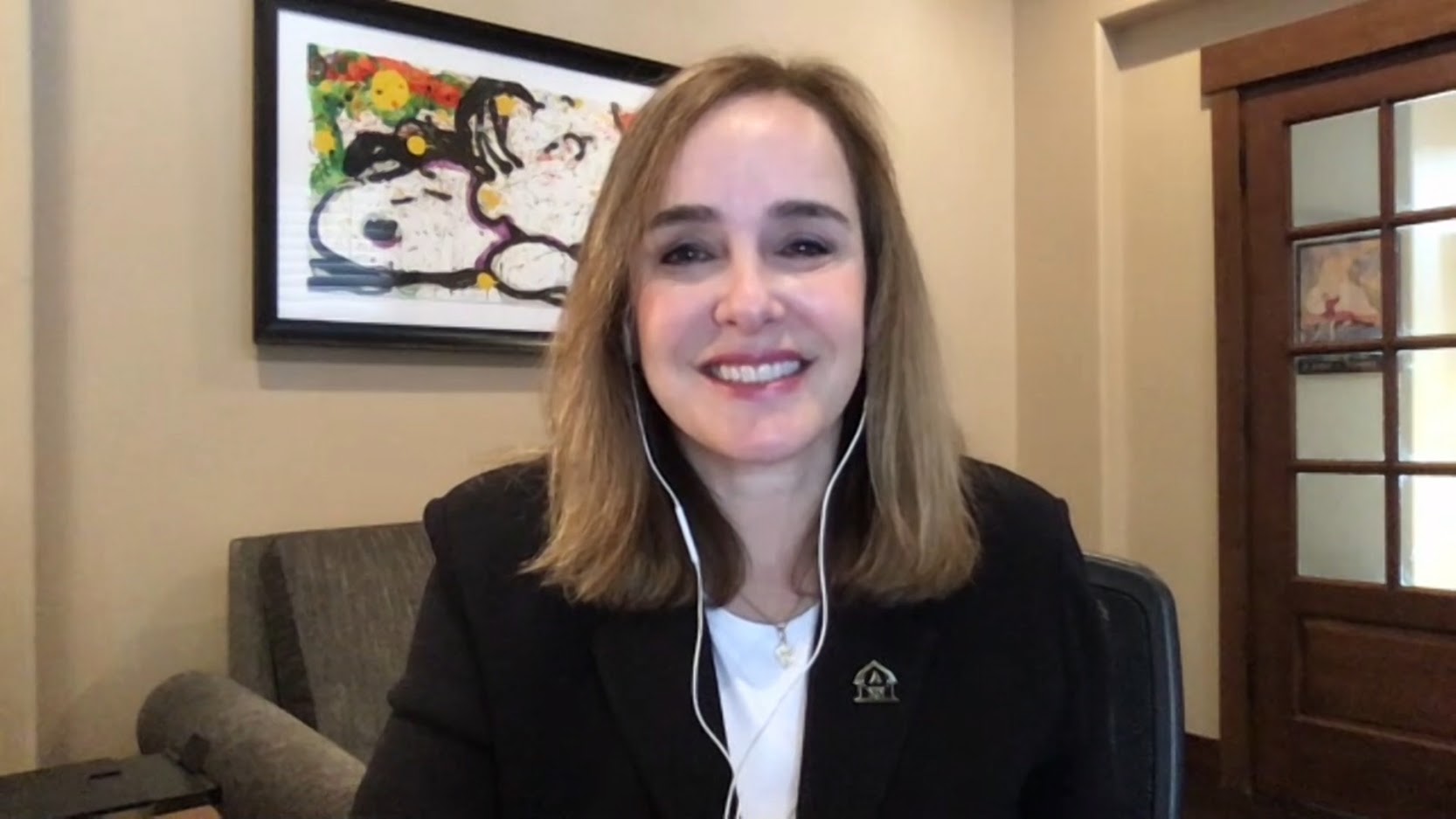 CLOUD
CLOUD
 CLOUD
CLOUD
 CLOUD
CLOUD
2020 took cloud operations from a business advantage to a business imperative, and that has propelled chief information officers into the spotlight, as chief executive officers look to implement cloud strategies ASAP.
Fueling the increased importance of the role is the fact that unlike the departmental focused viewpoints of other executives, CIOs have observation and influence companywide. “It makes the CIO a business and thought leader, a strategic leader because the IT shop is not just talking tech,”said Ana Pinczuk (pictured), chief development officer at Anaplan Inc. “The IT shop has to talk a lot more about the outcome that they’re trying to deliver.”
Pinczuk spoke with Dave Vellante, host of theCUBE, SiliconANGLE Media’s livestreaming studio, during theCUBE on Cloud event. They discussed how moving into the next generation of cloud means not only combining people, processes and technology, but balancing business resiliency, agility and innovation.
“When I talk to CIOs today, they’re thinking about different kinds of things than before,” Pinczuk said. “It’s not just going digital, but how do I enable my people to work remotely? How do I bring the agility and the flexibility that I need in our business, especially with these new ways of working? How do I look at business resiliency … and how do I help our company and our people spring forward and grow from where we are?”
The early fear of adopting cloud operations has largely disappeared, meaning even traditionally resistant sectors with strict compliance requirements, such as finance, are starting to switch to cloud. Instead of asking if the cloud is safe, the CIO conversation has switched gears to business outcomes and facilitating interaction and communication, both inside and outside the company.
“Given the tremendous focus that the cloud providers and [software-as-a-service] companies have put on security, I see many more companies feeling very at ease and, in fact, telling their organizations we need to switch to the cloud,” Pinczuk said.
A CIO’s prioritization list now contains three items, according to Pinczuk. First is resiliency — the ability to recover from unforeseen setbacks, such as the pandemic, civil unrest, natural disasters and major cultural shifts. This leads to the second priority, which is the need to be agile. Third on the CEO’s agenda is providing not only solutions, but providing them fast.
“When companies are talking to the cloud providers, and particularly [software-as-a-service] companies, what I see them talking about is, ‘Look, I’ve got this particular need, and it would take me two years to do it with a legacy player because I’ve got to do this on-premises,” Pinczuk said. “But you have the fundamentals built-in, and I think I can do it with you in three months. Business resiliency, both to grow and to recover from stuff, agility and innovation, are three fundamental levers that I see for movement to the cloud.”
Software-as-a-service platforms are stepping up to help CIOs fulfill these new requirements without having to re-engineer the entire company.
“It’s about how to leverage a cloud infrastructure, and then how do you enable the customizations on top of that?” Pinczuk said. The technology that is embedded in the cloud is “awesome from a talent perspective,” she added. “Instead of hiring specialized database experts or developers, companies can leverage the capabilities of the cloud services and vendors. So, in effect, how it helps the CIO is to provide this ecosystem of talent embedded in what the cloud provider does.”
One focus of the CIO is on business agility and business outcomes. But other important concerns are around people, collaboration and communication. These drive change internally within an organization’s culture but are is also important from an external viewpoint.
Building a digital foundation and leveraging insights from internal company data is only the first step to greater digital dominance. The greater the amount of data accessible, the greater the insights revealed, and the more powerful innovations that will result. This is where another benefit of cloud comes into play: its ecosystem.
“What’s going to drive innovation is being able to have access to the world’s data,” Pinczuk predicted. “So the only way to play right now in tech is in a collaborative way, in an ecosystem way.”
Here’s the complete video interview, part of SiliconANGLE’s and theCUBE’s coverage of theCUBE on Cloud event:
Support our mission to keep content open and free by engaging with theCUBE community. Join theCUBE’s Alumni Trust Network, where technology leaders connect, share intelligence and create opportunities.
Founded by tech visionaries John Furrier and Dave Vellante, SiliconANGLE Media has built a dynamic ecosystem of industry-leading digital media brands that reach 15+ million elite tech professionals. Our new proprietary theCUBE AI Video Cloud is breaking ground in audience interaction, leveraging theCUBEai.com neural network to help technology companies make data-driven decisions and stay at the forefront of industry conversations.